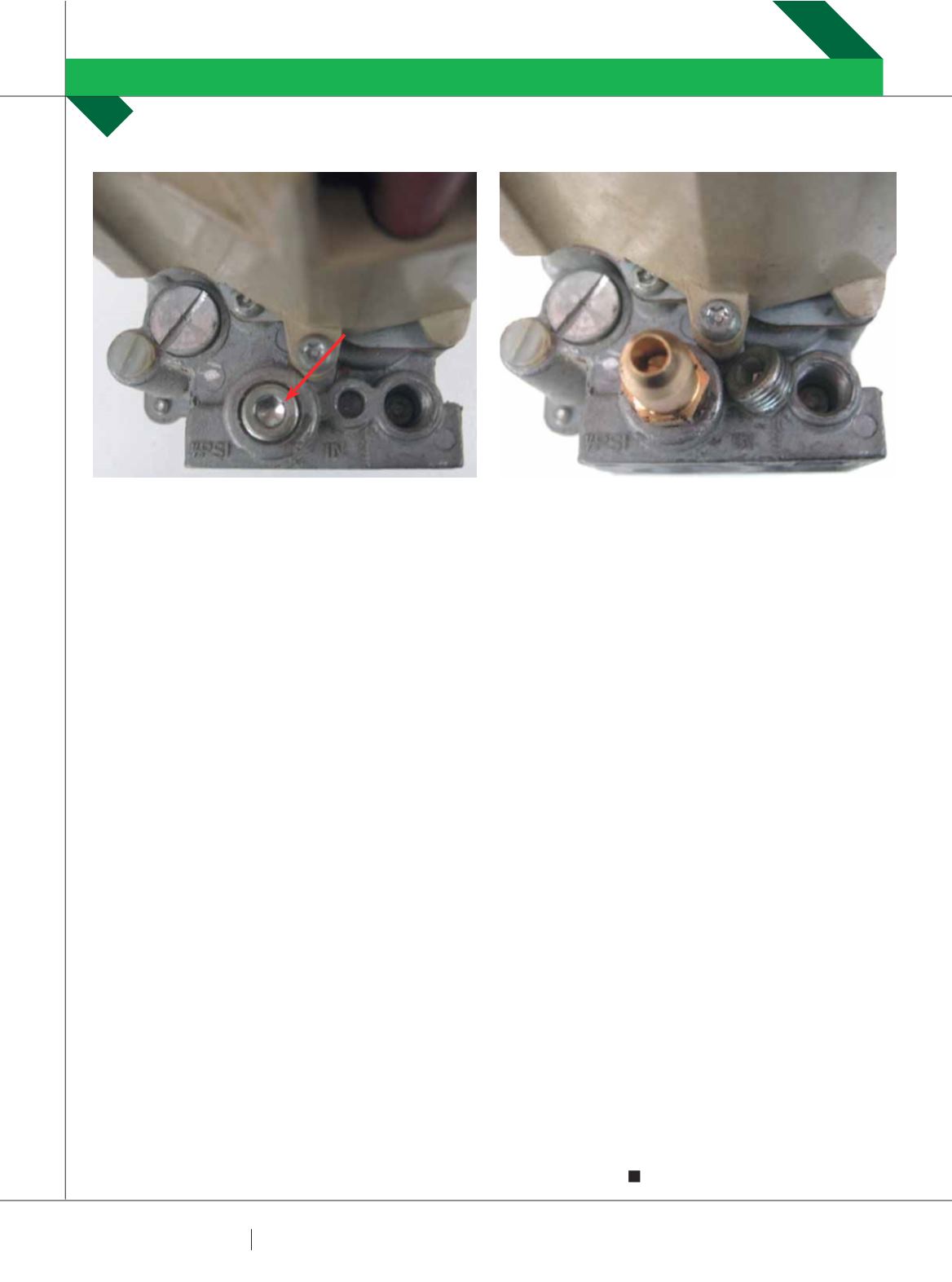

8 6
PLUMBING CONNECTION
SPRING 2015
Note: For pressure exceeding 7kPa, the testing equipment
should include a mechanical connection to the test point.
And what does Clause 2.4.10 mean to the plumber/
gasfitter? It helps to establish legally that the correct supply
pressure of gas is flowing through the gas meter where a
test point is located at the head of the gas fitting line.
Some gas meters do incorporate a test point on the outlet
of the meter. However, under the Victorian Gas Act of 1997
and similar legislation in other states, this test point is not
to be accessed by the plumber/gasfitter. This would be
deemed to be tampering with the meter.
If any adjustment of the meter regulator is required, it
must not be done by the plumber/gasfitter.
Regarding Clause 5.11.4 – test points are a distinct
advantage in establishing that correct supply pressure is
flowing to all the gas appliances in the system, with all of
them on at the same time.
AS 5601-2004 did not even define what a pressure test
point is.
In many cases the test point on the outlet of the appliance
regulator indicates the flowing pressure to the appliance
burner.
What it does not establish is whether problems in
attaining the operating pressure are associated with the
inlet supply to the control valve of the appliance (at least
1.13kPa for natural gas).
With the inlet test point before the appliance, this can be
verified. Also, the operating pressure from the gas meter
can be established at a minimum of 1.2kPa. If this is not the
case, there’s a supply problem that can be addressed only by
the gas distribution company.
Some gas valves do not have test points, but a plug can be
removed and a test point inserted.
PRACTICAL OBSERVATION
The extra pressure test points, where required by these
clauses, will be an additional cost to the customer, plus
materials and installation time.
However, in the installation manual that I looked at, one
method of installation shows the 693mm wide appliance
placed in a cavity that is only 695mm wide. Where the
standoffs are removed for fitting the appliance into a
masonry cavity, the overall width is 685mm.
With a clearance of only 1mm or, in the case of removing
the standoffs, 5mm either side of the appliance how do you
run a 12mm copper gas line plus a test point if required?
In this case the manufacturer – contrary to the Standard
for installing the appliance in a residence – also requires
an isolating valve as close as possible to the appliance
regulator.
Obviously the isolating valve and test point will not fit and
will have to go inside the appliance. The next problem will be
how to remove the heater with those components inside.
Otherwise, if the installer has to penetrate the wall next
to the appliance to accommodate an isolating valve and test
point, it may require a screwed access panel to hide them.
How will the customer feel about a screwed access panel on
what may be a feature wall?
This article is not about the quality or efficiency of any
gas appliance. It is about the confusion in installation
instructions between what the manufacturer wants and the
AS/NZS 5601 gas installation Standard.
Installers need clear, practical methods for placing
appliances to the satisfaction of the end user. Accountants
can measure almost everything about how a business runs
– but not customer dissatisfaction, which may result in
commercial failure.
While some gas valves do not have test points, they do have a plug that can be removed and replaced by a test point as can
be seen above.
GAS MATTERS
ROGER LAMBIE
















